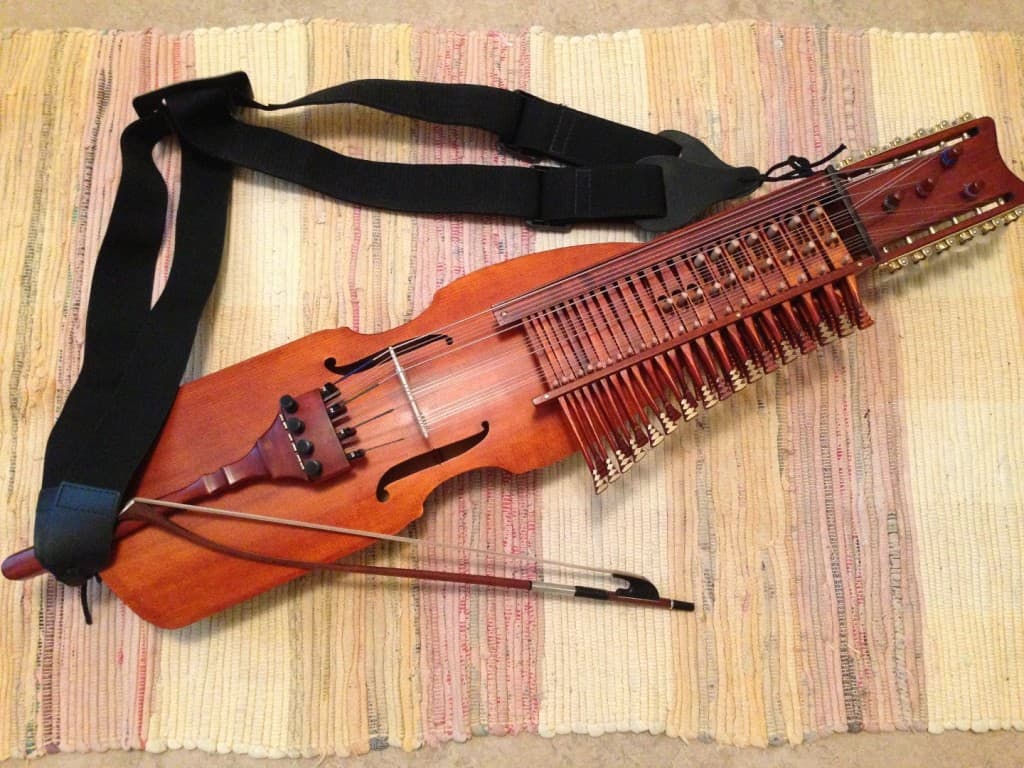

The Wikipedia website lists more than 300 different instrument names, all of which fit the definition of "string instrument." That's because humans all over the world have created their own versions of string instruments using the materials they had at hand – and to fit the soundscape that was considered the most compelling or attractive to their ears. However, it's important to remember that even a hollowed gourd with resonant fibers strung across a soundhole (the original incarnation of modern-day banjos) has as much of a right to be called a string instrument as the most sought-after antique Stradivarius violin. We'll discuss those in more detail in a bit. If you were born in Europe or the United States, the string instruments you are most familiar with are probably the guitar and mandolin, the piano, and those found in an orchestra. In each case the effect is to displace the string from its normal position of rest and to cause it to vibrate in complex patterns." The string may be struck, plucked, rubbed, bowed, or, occasionally blown. In nearly all stringed instruments, the sound of the vibrating string is amplified by the use of a resonating chamber or soundboard. "…any musical instrument that produces sound by the vibration of stretched strings, which may be made of vegetable fiber, metal, animal gut, silk, or artificial materials such a plastic or nylon. The Encyclopedia Britannica defines a string instrument as:

What Makes a String Instrument a String Instrument You can view those HERE), let's define the characteristics of string instruments. These range from the single-stringed diddly bow, which originated here in the United States and contributed to blues music, to the 88-stringed piano, which is considered both a string and a percussion instrument.īefore we get too far into describing various string instruments (don't worry, we won't list all 300. Worldwide, there are more than 300 different instruments that are considered part of the string family. The string instrument family has the most significant number of "children" than any other group of instruments.


 0 kommentar(er)
0 kommentar(er)
